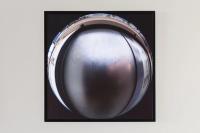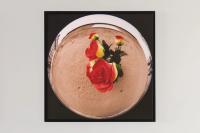Works



Installation Views
Press Release
Photography has made a consistent appearance in Emanuel Rossetti’s practice. At times, he anonymized the photographic element by using it as a fragment in virtual compositions or turning it into a background. “Developments” presents the photographic image on its own. It has pushed its way back to the foreground. In the last instance where he exhibited photography as photography, a series of glacial erratics (“Findlinge”) were shown. But that was years ago. In part, he was interested in how the “Findlinge”—large rocks transported by glaciers—are moved and used to demarcate urban space in Switzerland.
Since then, he continuously made use of found objects to signal spatial limitations and, concurrently, interfere with them. For example, his repeated use of bells, and the sound they make has become a steady part of his repertoire. In Paris, the bells are equally reminiscent of the 1980s and the Baroque.
But how did the photographic image return to his practice? Although all the exhibited photography was taken during his month-long stay in Paris, the format he chose for them rejects the documentary. By using a ultra wide-angle lens, commonly referred to as “fish eye”—the classic comic means to distort images—he distances himself from the representation of his subjects.
Taken while roaming through Paris, the pictures depict commonly seen pedestrian details: a fruit stand, staircases, building facades, shop windows, etc; the calculated enumeration of physical surfaces and their perforations. Through this, the artist realizes images that themselves, via the “fish eye” effect, look like holes on black squares.
Here, I would suggest, the photography reacts to something that is constructed, as opposed to simply taken. Herein lies a contradiction to the reference of the readymade or found object, which links the artist’s use of generic digital renderings (eg. scissors) or drawings. Repeatedly, and with an insisting tone, the artist points to the cut between what’s already there and what has to be made.
Next to the fish eye photography, Emanuel Rossetti exhibits a painted wooden sculpture, a light box and different sounds emitted from various speakers. The works establish a quasi Lynchian effect that isn’t based on intuition, but rather sequenced through multiple units in a system. And just like that, the work shifts from the realm of the icon to that of the index.
As an experience, this emphasizes the relationship between the active and residual space and how one moves between them.










